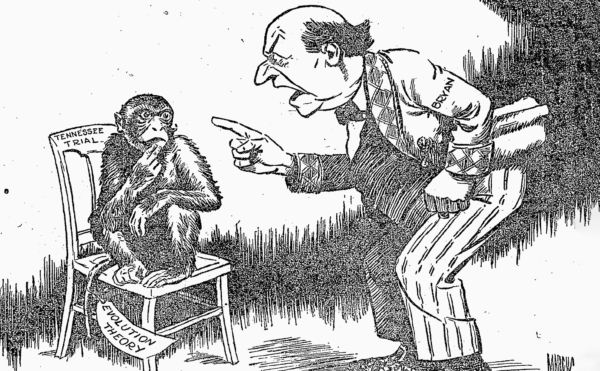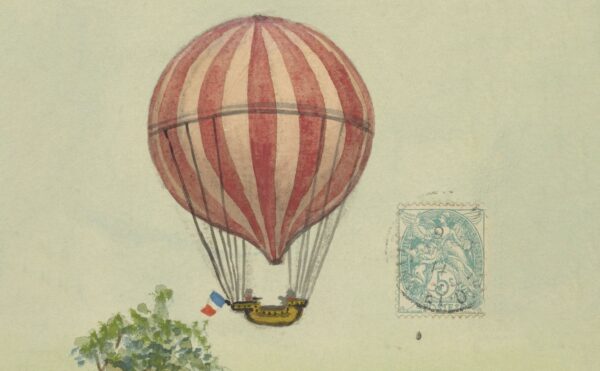Karl Schmidt was a world-renowned herpetologist, and on September 25, 1957, he made a mistake. While helping a colleague examine a snake to confirm its breed, he shifted his grip wrong and got bitten. Only this wasn’t a serpent of the harmless garden variety; it was a boomslang, one of the deadliest snakes on the planet. His ghastly, first-hand account of the symptoms has helped scientists learn something important about antivenom.
About The Disappearing Spoon
Hosted by New York Times best-selling author Sam Kean, The Disappearing Spoon tells little-known stories from our scientific past—from the shocking way the smallpox vaccine was transported around the world to why we don’t have a birth control pill for men. These topsy-turvy science tales, some of which have never made it into history books, are surprisingly powerful and insightful.
Credits
Host: Sam Kean
Senior Producer: Mariel Carr
Producer: Rigoberto Hernandez
Associate Producer: Sarah Kaplan
Audio Engineer: Rowhome Productions
Transcript
When Karl Schmidt was fourteen, he set up a chemistry lab in his bedroom. But, things didn’t exactly go as planned during one experiment.
First, he spilled acid on the carpet. Then he mixed a bit too much of two ingredients together, and the test-tube erupted. Things quickly got out of hand.
Between the sizzling and the popping and Schmidt’s yelping, his mom barged in before too long. She was a science person herself; she loved botany and astronomy, and she used to quiz Karl about trees and constellations.
But that day, she just stared at the damaged table and carpet. She asked what happened.
Schmidt admitted he’d spilled a little acid. Or, a lot of acid. Then there was the eruption.
She stayed silent. Then she nodded and said, “Well, don’t hurt yourself. And you’d better grow up to be a genius.”
Schmidt grinned, feeling a wave of relief. He promised he’d try.
If not a genius, Schmidt did grow up to become an excellent scientist—an expert on venomous snakes. Although today, he’s best remembered for one thing: a diary he kept after an encounter with a toxic serpent in 1957.
The diary is inspiring in some ways but chilling in others. Because in forty-plus years of studying snakes before that, Karl Schmidt had never suffered a major bite. And when he finally did, he decided to document the danger right up to the edge of death.
Karl Schmidt was born in 1890 in Illinois. He proved a brilliant student. He zoomed through the first eight grades of school in five years.
His first love was literature. In high school, he read widely in philosophy and drama: Berkeley, Hume, Shakespeare, Ibsen.
But he proved a momma’s boy at heart, and gravitated toward the sciences. Hence that chemistry lab. Although he eventually realized his true calling was biology. On the family farm, he and his brother collected butterflies, moths, toads, and snakes.
He kept the snakes in a cage on the porch. He didn’t specify how he caught them, but a common technique then involved pinning a snake down with a long stick, then rolling the stick up toward the base of the skull. That way, you can grab them so they won’t bite you.
One catch especially fascinated Schmidt—a fat, sluggish pine snake who turned out to be pregnant. After a few days, she gave birth, pumping out fifteen eggs over four hours. They were long, white, and sticky.
Later, the snake learned to eat mice right out of Schmidt’s hands, like a dog. He shivered to watch her squeeze the mice—squeeze so hard that their eyes bulged out of their sockets.
After that, Schmidt was hooked—snakes became the obsession of his life.
He enrolled at Cornell University. When the United States entered World War I, the thought of getting drafted horrified him. Not because he feared trenches and machine guns, but because it might interrupt his snake research.
By the end of the war, he was a tall, moon-faced man, with thick glasses and slicked-back hair. At age 28, he became a curator at a museum in New York. The next year, 1919, he married a woman named Margaret. They took a romantic honeymoon to Puerto Rico, where he spent most of the trip collecting reptiles.
In 1922, he jumped to the Field Museum in Chicago. Over the next three decades, he led nine collecting trips around the world—to China, South America, all over. He pioneered the practice of hunting for reptiles at night. He eventually got elected to the National Academy of Sciences, and described 200 new species of reptiles.
All in all, a splendid career. But frankly, no one would remember Karl Schmidt today if not for the events of September 1957.
Schmidt was 67 years old then. He had less hair, his shoulders slumped a little, and his belly slumped a lot over his belt.
On September 25th, a colleague called from the Lincoln Park Zoo in Chicago. The zoo had recently acquired a snake from Africa. Someone had told them it was a boomslang, but they wanted Schmidt to confirm.
Now, this news—a boomslang—must have caused a stir at Schmidt’s museum.
In Africa, boomslangs range from Nigeria in the north to Botswana in the south. Adults reach six feet in length. Overall, they’re a timid snake. They live in trees and prey upon critters like chameleons and birds. Females are brown, while males are green with subtle black stripes. They have gigantic black eyes, the kind of eyes that could hypnotize you.
But above all, boomslangs are known for one thing: having one of the deadliest venoms on earth. One ten-millionth of an ounce can kill a bird. And they have over 13,000 doses of that size packed behind their fangs.
People in Africa have likely known how dangerous boomslangs are for thousands of years. And in 1940, a few South African scientists documented this deadliness in an article, to alert the scientific community.
Now, according to later news stories, Schmidt had no idea how venomous boomslangs were. That seems hard to believe, given his expertise with snakes.
But to be fair, there might have been some confusion that day, due to an odd aspect of the snake’s anatomy. The zoo colleague pulled it out of the box it arrived in. It was probably agitated—hissing and whipping its tail. It stretched two feet long, pretty tiny for a boomslang. As a result, Schmidt didn’t know exactly what he was looking at. So he asked to hold the snake himself.
And in doing so, he made a terrible mistake. When the zoo colleague handed the snake over, Schmidt should have immediately shifted his grip up, to hold the snake right at the base of its skull. But he didn’t. He kept his grip low, a good inch or two below the skull.
Despite this less-than-safe grip, Schmidt began prodding the snake. He was examining something called the anal plate. It’s a scale that covers the cloaca.
The cloaca is a sort of all-in-one orifice for reptiles—for urinating, defecating, reproduction, everything. We mammals prefer to keep those functions separate, but the cloaca works just fine for scaly things.
The shape of the anal plate can provide a rough guide for whether a snake is poisonous. Venomous snakes generally have anal plates that are divided in two. Non venomous snakes generally have undivided anal plates. So Schmidt began examining the boomslang’s bum, to see what kind it had.
And he grew so absorbed that he failed to notice its panic. This snake was used to hunting chameleons and songbirds, not being manhandled by giant featherless bipeds. And in writhing around, it saw a bit of flesh nearby and decided to strike.
Unlike most snakes, boomslangs don’t have fangs at the front of their jaws. Their fangs sit much farther back. So to sink the fangs in, boomslangs have to wrench their mouths open incredibly wide—a full 180 degrees. It’s a scary sight.
That day, the snake chomped down on the fleshy part of Schmidt’s left thumb. Thankfully, just the right fang struck home. And it sank down just ⅛ of an inch. But some venom did enter.
Generally, snake venom falls into one of three categories. Some snakes have cytotoxic venom. This venom kills cells, turning the tissue around the bite into a black hue. It’s yucky, but effective.
The second type is neurotoxic venom. This interferes with nerve function. Black mambas and cobras have this type of venom.
The last type is hemotoxic venom. This affects blood. Some hemotoxic venoms cause blood pressure to spike or plummet. Some cause lethal blood clots. Others cause massive hemorrhages. Boomslangs produce hemotoxins.
After getting bit, Schmidt no doubt threw the snake down and swore. He also began sucking at the wound, to draw the poison out.
Unfortunately, as scientists now know, sucking on a snakebite doesn’t work. Once the poison’s inside you, it spreads too quickly to remove.
Now, normally after a snakebite, the victim would rush to the hospital. There, they’d get injected with something called antivenom. It’s a serum full of proteins that counteract snake venom.
But Schmidt said no. He refused to visit the hospital. Perhaps this was some macho posturing—Schmidt trying to look tough. As if, no real snake expert would need medical treatment.
Also, boomslangs came from Africa. So perhaps he reasoned that a clinic in Chicago wouldn’t have the right antivenom to help.
But part of his motivation seems to have been scientific. As Schmidt later said, if he got any treatment, it would, quote, “upset the symptoms.” It seems he was genuinely curious: What would the bite do to him? How would it feel?
He would spend the next 24 hours documenting the answers in excruciating detail.
Incredibly, after being bitten, Karl Schmidt took the train home. Can you imagine? Commutes are awful enough. Imagine commuting after a snake bit you. You’re swaying in the seat—feeling nauseous—sweating. Schmidt had to rattle 21 miles home like that, then stagger to his front door.
At home, Schmidt sat down and opened his diary to document the symptoms. The following entries come from that diary:
“4:30–5:30 P.M. Strong nausea but without vomiting.”
“5:30–6:30 P.M. Strong chill and shaking followed by fever of 101.7 [degrees]. Bleeding of mucus membranes in the mouth began about 5:30, apparently mostly from gums.”
“8:30 P.M. Ate two pieces of milk toast.”
“9:00 [P.M.]–12:20 A.M. Slept well. Urination at 12:20 A.M. mostly blood but a small amount.”
“Took a glass of water at 4:30 A.M., followed by violent nausea and vomiting, the contents of the stomach being the undigested supper. Felt much better and slept until 6:30 A.M.”
“September 26[th]. 6:30 A.M. Temperature 98.2. Ate cereal and poached eggs on toast and applesauce and coffee for breakfast at 7. Slight bleeding is now going on in the bowels, with frequent irritation in the anus. No urine with an ounce or so of blood about every three hours. … Mouth and nose continuing to bleed, not excessively.”
By noon that day, 20 hours after the bite, Schmidt felt better. The worst seemed to have passed. He even called his colleagues at the museum, and said he’d be coming in to work later.
He never made it. And ironically, those words—“bleed[ing], not excessively”—would be the last thing he ever wrote.
That afternoon, Schmidt’s hands grew eerily cold, and his face fell pale. He also began struggling to breathe. He called out to his wife, who called the paramedics.
By the time an ambulance arrived, Schmidt was sweating freely and couldn’t speak. He was barely conscious.
The paramedics went to work reviving him. Within minutes, color had returned to his face. His hands warmed up. It was a big relief.
But his breathing never came around. Before long, he lost consciousness. The paramedics hustled him into the ambulance and flipped on the siren. They tore off to the hospital.
But Schmidt was dead by the time they arrived. It was 3pm—less than 24 hours after the boomslang bit him.
The autopsy was a mess. The hemotoxin had caused bleeding in every major organ. Blood was pooled in his bladder, his intestines, his brain, his lungs. Even his eyes were bleeding. The best guess was that he died of respiratory failure, but who knows.
The news stunned his colleagues. Schmidt was one of the best reptile guys around, sure handed and confident. Now he was dead, due to one moment of carelessness.
Someone got ahold of his diary, and printed the snakebite entries. It’s one of the very few scientific accounts of what deadly venom feels like coursing through your veins. And however fascinating they found it, his colleagues no doubt read it with a shiver. They had to have looked in the mirror and wondered—would they be next?
For the next half-century, herpetologists passed down Schmidt’s story. It became part of the oral history of the field. Then, in 2017, a few venom researchers decided to play the what-if game. What if Schmidt had gotten treatment right away? Would he have lived?
A Chicago hospital in 1957 would have had just one type of antivenom on hand. It mostly counteracted rattlesnakes and Water Moccasins. But the scientists in 2017 decided to test it anyway. They found a modern antivenom very similar to the 1950s version and mixed it with boomslang venom.
Now, boomslangs and rattlesnakes are not closely related. There was no real reason to think the antivenom would work. But it did a decent job. The proteins in the antivenom locked onto several deadly proteins in the boomslang venom and neutralized them.
And that might have been enough. In a paper on their work, the scientists noted that reducing the activity of a venom by even 25 percent can mean the difference between life and death. The bottom line is: if Karl Schmidt had gotten treatment with 1950s antivenom, he might have lived.
Now again, news stories about Schmidt’s death always insisted that he and other herpetologists simply didn’t know how deadly boomslangs are. But I don’t quite buy that. Already by 1940, scientists had documented that boomslangs are deadlier than even cobras and mambas. And Schmidt was one of the world’s leading experts on snakes. Did he really not know?
And if he did know, why didn’t Schmidt give treatment a shot? Personally, I think curiosity got the better of him.
Remember, at some point, a colleague did suggest he get treatment. But Schmidt said no. In his words, it would “upset the symptoms.” He’d spent his whole life studying snakes. And their venom was about the only thing he had no first-hand knowledge of.
Or maybe Schmidt declined the treatment for another reason. Perhaps he figured he was a goner no matter what. And instead of curling up and moaning, perhaps he simply put on a brave face and decided to document the symptoms as best he could. Perhaps he wanted to do one last bit of science, even in the face of death.
Because in documenting those symptoms, he could help scientists understand what happened to the body after a boomslang bite. This could save other victims in the future. And more than that, by documenting all the pain, he could provide the most effective warning possible to his colleagues: a warning that they should never ever let their guards down around a wild animal, no matter how much of an expert they assume they are.




